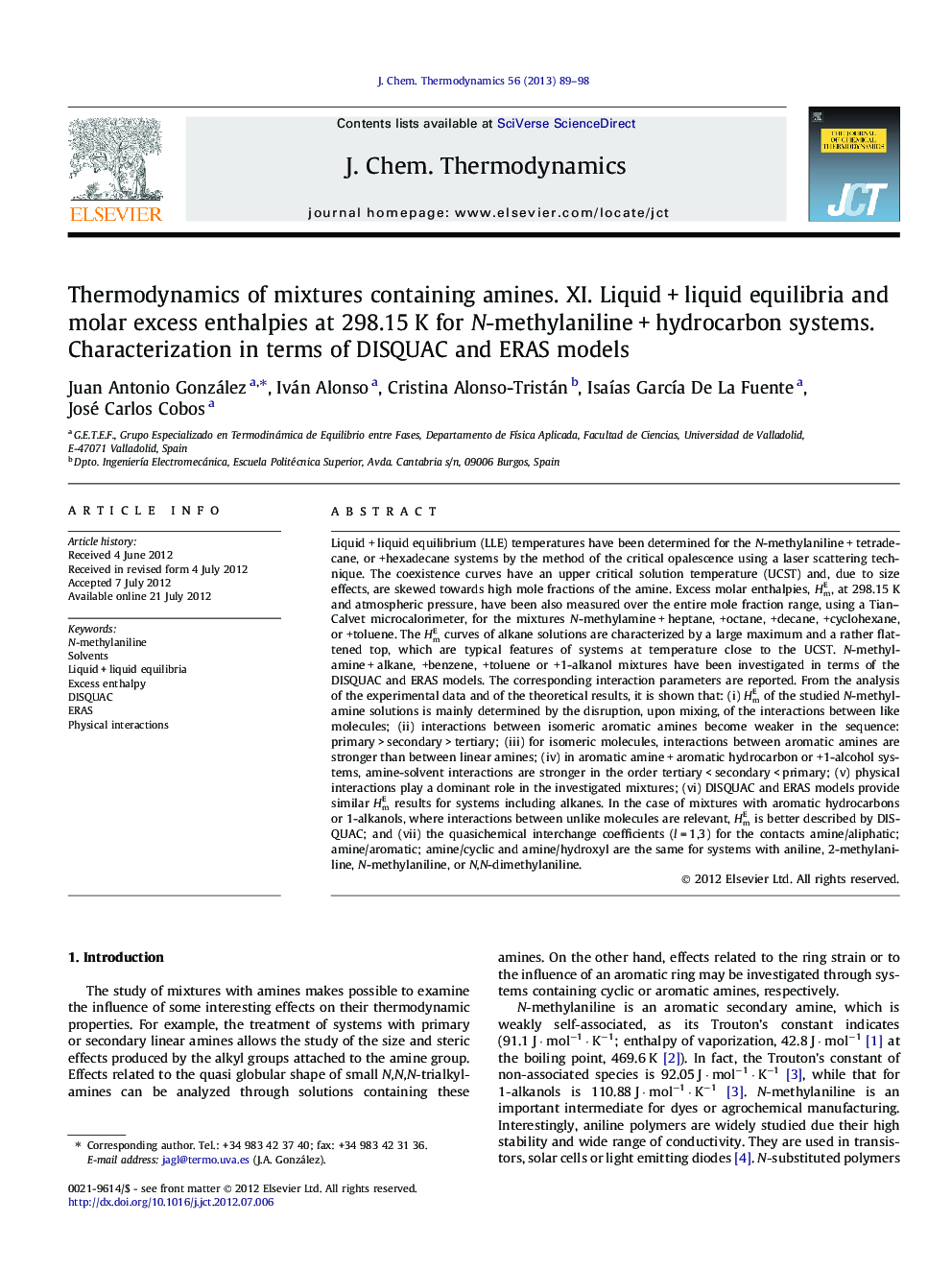| کد مقاله | کد نشریه | سال انتشار | مقاله انگلیسی | نسخه تمام متن |
|---|---|---|---|---|
| 215925 | 1426257 | 2013 | 10 صفحه PDF | دانلود رایگان |

Liquid + liquid equilibrium (LLE) temperatures have been determined for the N-methylaniline + tetradecane, or +hexadecane systems by the method of the critical opalescence using a laser scattering technique. The coexistence curves have an upper critical solution temperature (UCST) and, due to size effects, are skewed towards high mole fractions of the amine. Excess molar enthalpies, HmE, at 298.15 K and atmospheric pressure, have been also measured over the entire mole fraction range, using a Tian–Calvet microcalorimeter, for the mixtures N-methylamine + heptane, +octane, +decane, +cyclohexane, or +toluene. The HmE curves of alkane solutions are characterized by a large maximum and a rather flattened top, which are typical features of systems at temperature close to the UCST. N-methylamine + alkane, +benzene, +toluene or +1-alkanol mixtures have been investigated in terms of the DISQUAC and ERAS models. The corresponding interaction parameters are reported. From the analysis of the experimental data and of the theoretical results, it is shown that: (i) HmE of the studied N-methylamine solutions is mainly determined by the disruption, upon mixing, of the interactions between like molecules; (ii) interactions between isomeric aromatic amines become weaker in the sequence: primary > secondary > tertiary; (iii) for isomeric molecules, interactions between aromatic amines are stronger than between linear amines; (iv) in aromatic amine + aromatic hydrocarbon or +1-alcohol systems, amine-solvent interactions are stronger in the order tertiary < secondary < primary; (v) physical interactions play a dominant role in the investigated mixtures; (vi) DISQUAC and ERAS models provide similar HmE results for systems including alkanes. In the case of mixtures with aromatic hydrocarbons or 1-alkanols, where interactions between unlike molecules are relevant, HmE is better described by DISQUAC; and (vii) the quasichemical interchange coefficients (l = 1,3) for the contacts amine/aliphatic; amine/aromatic; amine/cyclic and amine/hydroxyl are the same for systems with aniline, 2-methylaniline, N-methylaniline, or N,N-dimethylaniline.
► We report LLE for N-methylaniline + n-C14 or +n-C16.
► We report HmE at 298.15 K for N-methylaniline + n-C7, +n-C8, +n-C10, +C6H12, +C7H8.
► DISQUAC and ERAS interaction parameters are given for the studied mixtures.
► Physical interactions are more relevant than those of association/solvation effects.
Journal: The Journal of Chemical Thermodynamics - Volume 56, January 2013, Pages 89–98